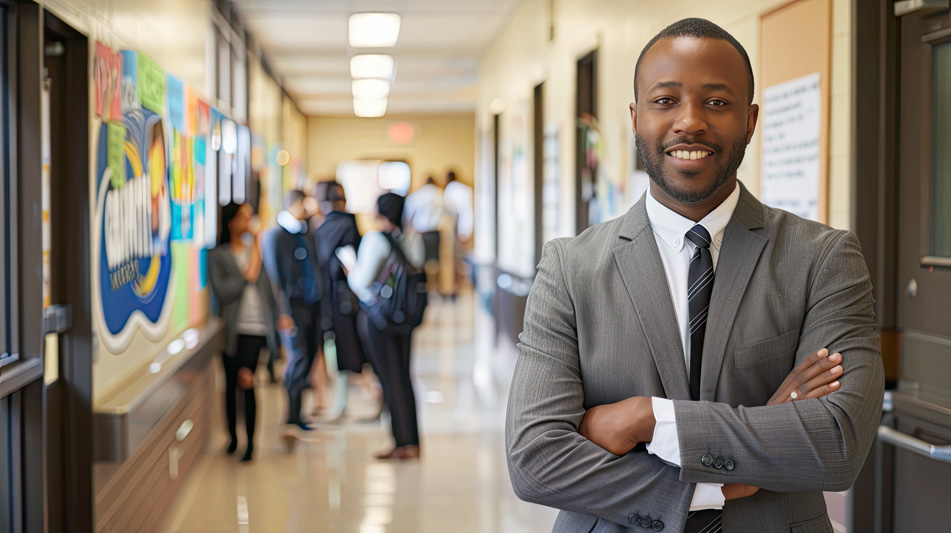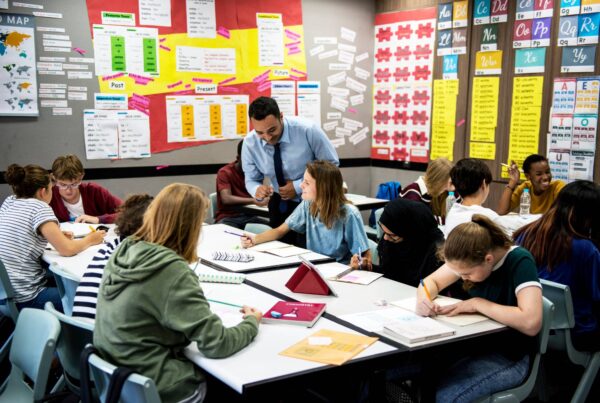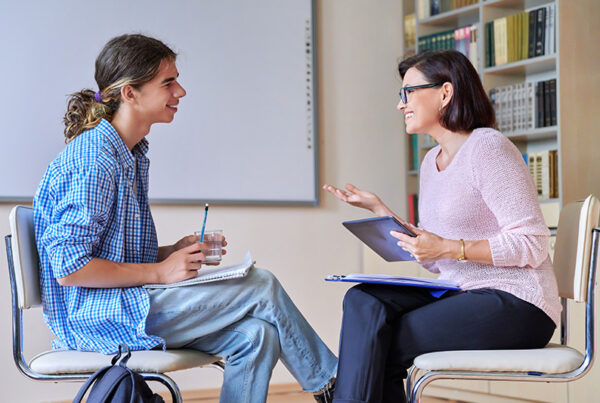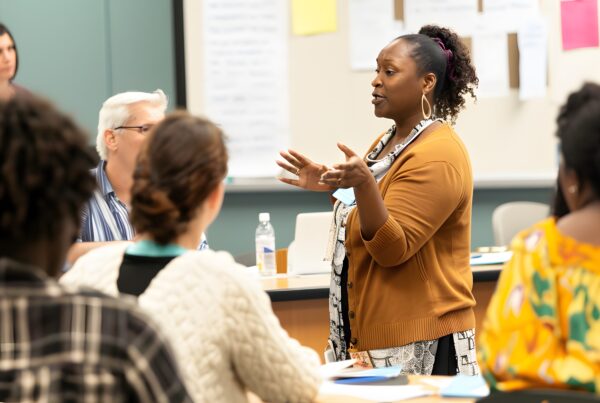What’s one of the most powerful ways you can help your students learn and grow?
It is well documented that increased teacher expertise has a powerful positive impact on student achievement. As an instructional leader, you can create a culture where your teachers are constantly deepening their professional expertise as part of a learning organization.
This series of blog articles focuses on developing the the 5 Critical Conditions for Increasing Teacher Expertise.
In this article, we tackle Condition #3: Opportunities to Observe and Discuss Teaching and Learning.
| Five Critical Conditions for Increasing Teacher Expertise |
|
Table 1. Marzano, Frontier, and Livingston (2011, p. 4)
In the first article of the series, you prioritized the needs of your building or district through a decision-making process. Then you dove deeper into the first two of the five conditions.
- What decisions have you made at this point?
- Are you planning on how to strengthen your Common Language of Instruction (Condition #1)?
- Have you reworked your observation processes to better support teachers engaging in Focused Feedback and Deliberate Practice (Condition #2)?
Both of these conditions are worthy of leaders’ time and energy. Perhaps, though, you discovered that the area that can provide your organization with the biggest lift is Opportunities to Observe and Discuss Teaching and Learning.
What is a learning organization?
Philip Schlechty (2009) describes an effective learning organization as having a high degree of “civic capacity.” Civic capacity refers to the ability of leaders and teachers to work together on behalf of common goals. This type of demonstrated cohesion builds trust, a common identity, and the willingness to work with a shared purpose and vision of success.
As the leader of a learning organization, you must help develop and continually communicate a strong vision and goals for your school. But a leader’s vision, without the support of an extended team of teachers and community members, will not suffice. How do create a school culture of professional learning and collaboration?
In School Leadership That Works (2005), Dr. Robert Marzano calls successful collaborative schools a “purposeful community.” He further describes these communities as demonstrating:
- Collective efficacy: Members of the community share an understanding and belief that they can dramatically enhance the effectiveness of the organization as a whole. In other words, they believe THEIR actions CAN make a difference and will lead to greater student achievement.
- Development and use of all available assets: Assets include tangible resources, such as physical or financial assets, and intangible assets such as the shared ideals and beliefs about the school’s core mission.
- Accomplishment of goals that matter to the community members: The school functions as a community created for a specific purpose with specific goals developed to achieve that purpose.
- Agreed-on process: An agreed-on process enhances communication among community members, provides efficient reconciliation of disagreements, and keeps members attuned to the status of the community.
How to track your progress as a learning organization
To maximize results in creating an effective learning organization, it is important to establish a baseline. Be honest with yourself about where your school is starting. How will you know how your school is doing on the attributes in the table below? Which are already solidly in place? Which may need additional support and leadership?
Opportunities to Observe and Discuss Teaching and Learning: How will you know when this condition is strong in your school?
- A sense of collective efficacy (belief that our efforts can help us achieve our goals) is evident in how team members interact and take ownership of challenges.
- Team members identify and utilize available assets in their work together, including identifying strengths and talents of personnel who can support their work, as well as determining school and community resources.
- Goals go beyond planning the next lesson or unit by putting their focus on sharing and analyzing instructional practices and examining which have proven to be most effective. Staff members also work collaboratively to clarify what students are to learn in each unit, create frequent common formative assessments to monitor each student’s learning, and implement intervention when needed.
- Team members challenge and encourage each other when a member behaves in ways that are inconsistent with well-articulated and communicated shared norms of the collective community.
- Teachers feel safe to observe others, to be observed in their classrooms, and to engage in supportive coaching and feedback
As in all school and district practices, just “having a good feeling about it” or “thinking things are OK” won’t help achieve goals. Utilizing surveys that elicit participants’ experiences in the school related to collaborative practices, interviews of team members to expound on survey results, data analysis to examine whether current structures are resulting in increased student achievement, and/or observations of team meetings and processes can all be used to identify the current status of teacher collaboration. Quite often, the reality does not match the initial perception. It is critical to identify what is and what is not currently working.
In the reflection process, you may find a variety of needs around collaboration. Developing your school as a learning organization can begin with two key aspects of “observing and discussing teaching and learning”: 1) Professional Learning Communities and 2) Instructional Rounds.
What can leaders do to establish and maintain effective teacher collaboration around instruction?
Professional Learning Communities
The most common form of collaboration in schools today is the Professional Learning Community (PLC). Learning communities can be defined as “small groups of educators meeting regularly to engage in systematic, ongoing, peer support and critique in order to improve their educational practices and student learning” (Whitford & Wood, 2010, p. xii).
Whitford and Wood asserted that PLCs allowed teachers to have collaborative conversations that “spawned possibility, inventiveness, and hope” in the way teachers think about student learning (p. 18).
Michael Hart (2015) analyzed a 9,000-teacher survey conducted by the University of Michigan and Vanderbilt University professors. Hart noted that “Almost 90 percent of the teachers surveyed said that the collaboration they find in working as instructional teams was helpful in improving student learning.” Hart drew a seemingly simple, but extremely important conclusion: “Teachers get better when they work together.”
Providing opportunities to discuss teaching and learning goes much deeper than just setting up PLCs. If your PLCs are not coupled with thoughtful design, ongoing leadership investment, and whole-school collaborative practices, teams will rarely get the desired outcome. In many places, teachers have come to see the organized time spent with their colleagues in these teams as a drain on their energy and time, rather than as the dynamic professional support they should be.
Seven key conditions can enable true collaboration among teachers and support observation and discussion of instructional practices (Graham & Ferriter, 2008).
| Enabling Condition | Supporting Actions |
| Filling the time: Teams have time to focus and have clarity about what they are to do when they meet. | Leaders must set clear expectations and establish structures for PLCs. |
| Sharing Personal Practices: Teachers are interested in learning what their colleagues are doing. | Leaders must require teams to make collaborative decisions about curriculum, assessment, and instruction. |
| Planning, Planning, Planning: Teachers work together to determine what they should be teaching, and how to share the planning workload. | Leaders must focus the PLCs’ attention on determining whether their students have learned what they planned to teach, and how they will know it. |
| Developing Common Assessments: Teachers think about what students should learn and the evidence of student learning that indicates mastery. | Leaders often must guide teams through disagreements and model for them how to make collaborative decisions. |
| Analyzing Student Learning: Teachers examine data to determine if students are learning what they should be learning. | Leaders must often provide both technical and emotional support, helping the PLCs to create a safe, non-judgmental environment for improving results. |
| Differentiating Follow-Up: Teacher teams take collective responsibility for student learning and are self-governing. | Leaders support PLCs by posing questions of practice and encouraging teams to continue growing professionally. |
| Reflecting on Instruction: Teacher teams inquire into the practices that are most effective for their students. | Leaders facilitate these discussions to help PLCs more deeply examine the connection between teaching and learning. |
Instructional Rounds
Instructional rounds can be one of the most valuable tools at a school or district’s fingertips. Instructional rounds enhance and expand teachers’ capacity and ability to analyze instructional practice. The primary purpose is to help educators expand their own set of tools and to engage in deep professional dialogue as part of a structured learning process (Marzano, Frontier, and Livingston, 2011).
The key to effective use of instructional rounds is to have specific processes, parameters, and structures that support peers to engage with confidence and competence. Rounds can be group-oriented, as in a PLC team visiting a classroom and then debriefing, or they may be individual or partner activities, in which one teacher works with one other teacher to observe and discuss instructional practices.
To build a culture that supports this type of interaction, consider :
(1) Getting Started
Start with the willing. Identify three or four teachers who are comfortable with others being in their classrooms. Conduct a few rounds and guide the teachers’ discussions with a protocol that maintains their focus. Have these teachers debrief about their experience and share with the rest of the staff before expanding the process.
Alternatively, start with a “buddy teacher” system. Assign each teacher a partner. These partners will determine when they will observe each other and debrief. Model the process, then allow the partners to proceed. Again, after the partners have worked through the observation and debrief, survey to determine if adjustments are needed.
The leader’s role will be as a guide and a logistics manager. It is critical for the leader to “put their money where their mouth is” in terms of protecting and prioritizing time for teachers not only to enter each other’s classrooms but also to adequately discuss and debrief afterward. Some ideas:
- Offer to cover classes to allow for observation and debrief
- Adjust daily schedules to buy minutes
- Reduce the number of other duties teachers have on “observation days”
- Enlist other staff members to support. For example, coaches may take on the role of modeling and supporting in observations and debriefs, or instructional aides may partner with a teacher to teach a lesson to two groups of students so one teacher can make time for an observation.
(2) Conducting Rounds
Be sure to provide a protocol for the observation (what do you want them to watch for?). Marzano’s Focused Teacher Evaluation Model protocols can be very helpful with this.
Determine which element(s) will be the focus for a given round of observations, provide the protocol, and allow the buddy teachers to observe and debrief together.
Model the process before turning it over. Ensure that teacher teams/partners are clear.
(3) Debriefing Rounds
Provide a discussion/debrief tool, as well, to maximize focus and a sense of safety between or among teachers. Growth Tracker can support as teachers discuss teaching and learning.
Again, model the process. Role-play a debrief session, perhaps in a staff meeting or PLC meeting, with a volunteer.
Debrief with staff after a series of rounds. In a staff, department, or PLC meeting, gather information about the process and adjust as needed.
Summary of developing a learning organization
A true instructional leader establishes and supports a culture that ensures learning at all levels. Leaders help PLCs promote reflective inquiry, trust, and positive working relationships within the school, and they put an emphasis and place high value on teachers learning and growing from their interactions with each other.
Reaping the many benefits of teacher collaboration takes planning and ongoing commitment. Building and district leaders are critical to creating and sustaining the types of learning organizations that can have powerful results.
References
Graham, P., & Ferriter, B. (2008). One step at a time. Journal of Staff Development, 29(3), 38-42.
Hart, M. (2015). Research: Collaboration is key for teacher quality. The Journal.
Marzano, R. J., Frontier, T., and Livingston, D. (2011). Effective supervision: Supporting the art and science of teaching. ASCD
Schlechty, P. C. (2009). Leading for learning: How to transform schools into learning organizations. Jossey-Bass.
Marzano, R. J. (2005). School leadership that works: From research to results. ASCD
Whitford, B. L., & Wood, D. R. (Eds.). (2010). Teachers learning in community: Realities and possibilities. SUNY Press.
About The Author: Kathleen Marx
Kathleen Marx, MSEd, is a leading expert in personal development across industries. Ms. Marx has worked closely with Dr. Robert J. Marzano and the Marzano Evaluation Center team in developing content and training new staff developers. Her background in classroom teaching, gifted education consulting, school counseling, life-success facilitation, and school leadership give her unique insights into leading strategies in implementing research-based instructional and evaluation models. She earned her master’s degrees in educational leadership and school counseling from the University of Dayton.





